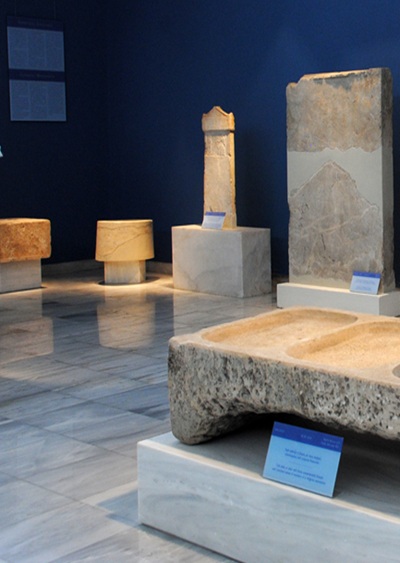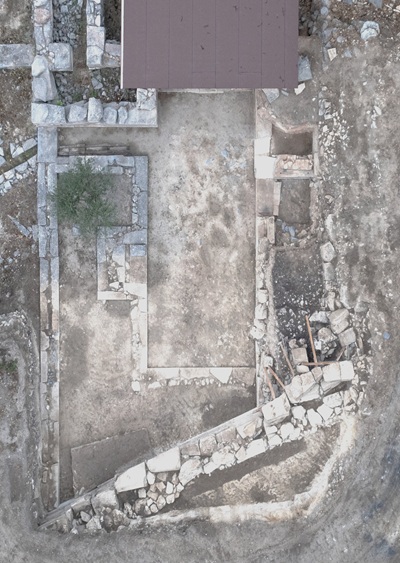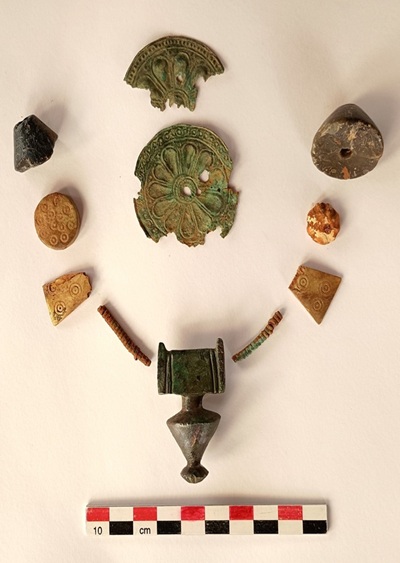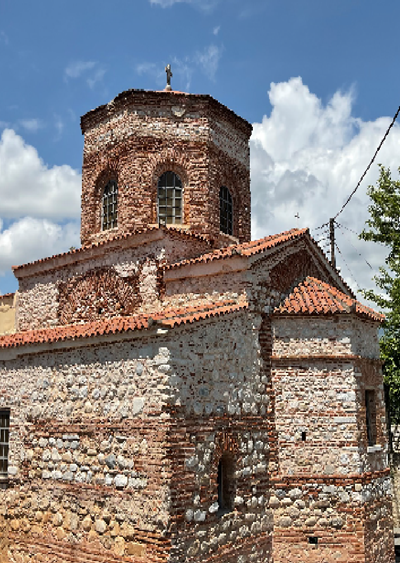
Important new evidence that sheds light on aspects of habitation in prehistoric and historical times, brought to light the excavation work conducted for the fourth year by the Antiquities department of Lesvos on the peninsula of Ovriokastro, in the wider region of ancient Andissa of the Municipality of West Lesvos, one of the six city-states of ancient Lesvos.
The excavation, which is funded by the Public Investment Programme of the North Aegean Region, is conducted by the Ephorate of Antiquities of Lesvos for the first time in this peninsula, where the medieval castle of Agioi Theodoroi is preserved, known in literary sources, in travelers’ tours, but also in patriarchal decisions already from the 13th century, as the existence of an important castle monastery dedicated to the Virgin Mary Hodegetria is attested inside.
During the current period of time, during the uncovering of the southeastern part of the medieval sea wall of the castle of Agioi Theodoroi, a fallen part of a marble lintel, 3. 50m long, was found near the foundation of the Byzantine gate of the castle.
The lintel bears in relief the coats of arms of the Gatelouzian dynasty and the Palaiologos, which until today were known from those of the medieval castle of Mytilene and indicate the tradition of the governance of Lesvos and its castles from the Byzantines to the Gatelouzian dynasty. The most interesting thing about the lintel of the Byzantine gate is that next to the coat of arms of the Palaiologoi instead of the double-headed eagle, a symbol of Byzantium, the depiction of a castle with the main gate and the three rectangular towers on the acropolis was found, which seems to be identical to the then Byzantine castle of Agioi Theodoroi, which was handed over in 1355 AD by the Byzantines to the Genoese family of Gatelouzos. The written sources and testimonies to date do not save any depiction of the Byzantine castle of Agioi Theodoroi. The marble lintel is the first depiction of it, and gives evidence of its form, unknown to us until today, as it had undergone many building interventions during the 15th century by the Gatelussian people.








Leave A Comment